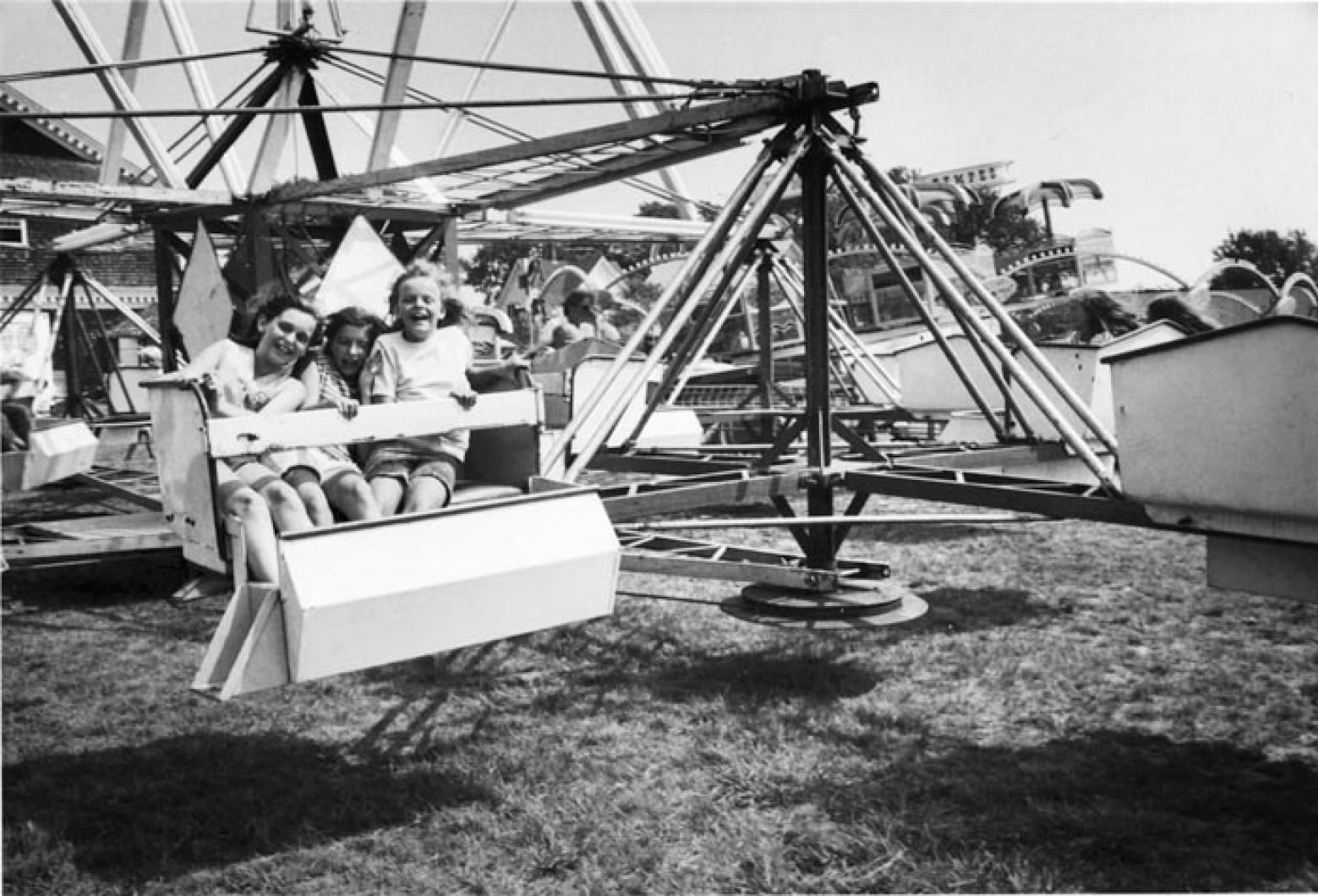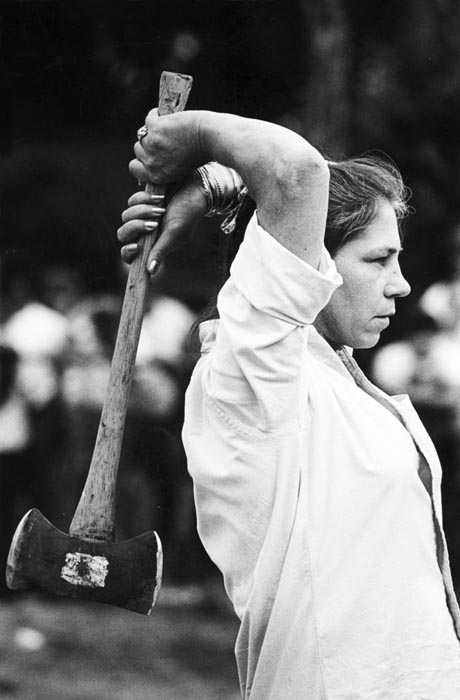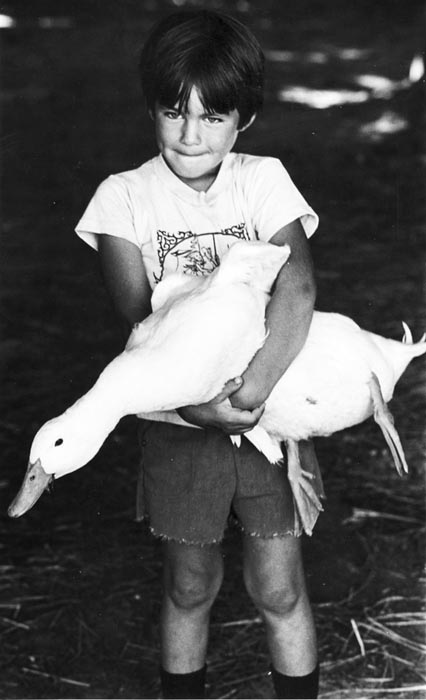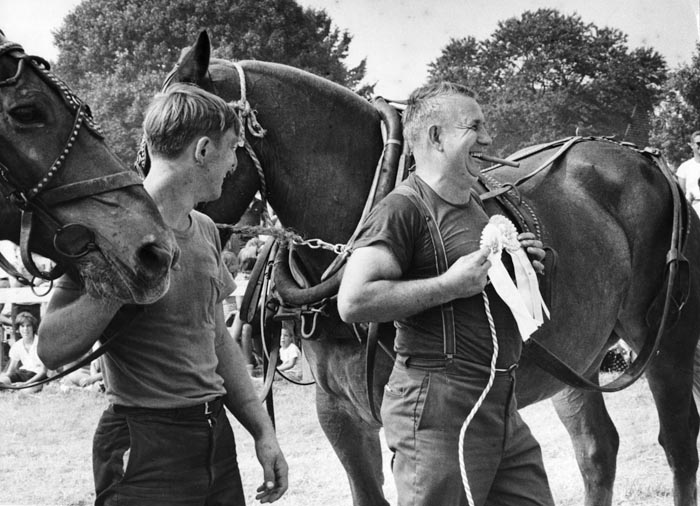The smell of hay and cotton candy, the lowing of cows, the dusty August air blowing through barn doors, ruffling your hair. The scratching of a horse against a stall, the whirring of the Ferris wheel.
Thousands of stitches hanging over the barn beams, the pride of dropping off an entry, no matter the age. Echoes of footsteps on the wide floorboards, wet grass tickling bare feet.
The golden haze of history lingers in the rafters of the barns, the halls, the tents and the food stalls every year at the annual Martha’s Vineyard Agricultural Society Livestock Show and Fair — and never more so than this year when the fair celebrates its 150th anniversary.
The theme for this year’s fair is Timeless Traditions, and for the past 150 years those traditions have cemented themselves in generations of Vineyarders.
The fair has seen pigs swim, kids climb as high as the rock wall will let them, horse and oxen pull blocks by the ton, ladies and gentlemen do-si-do. And at least one sitting President made an appearance.
Every fair is better than the last, the organizers declare with a mix of confidence and optimism. Attendance records were broken throughout the 19th and 20th centuries, peaking in the 1990s at 30,000. Each year reports of fruits and vegetables are equally glowing, unless there’s a drought and then the focus shifts to the arts and crafts.
The fair has seen changes through the years. Originally called the Martha’s Vineyard Agricultural Cattle Show and Fair, it was held at the Grange Hall in West Tisbury for two days in September until 1925 when it became three days. The agricultural society stopped the fair for three years in 1942 to accommodate emergency war efforts, and when it resumed in 1946, the dates were changed to three days in August to accommodate the final push from summer visitors. The anniversary accommodates the date discrepancy.
Eventually cattle weren’t the only animals being submitted for judging anymore, and in 1976 the name was changed to accommodate all livestock.
The ever-growing fair moved to its current location at the new Agricultural Hall in 1995. The fair became a four-day event in 1998 when a downpour cancelled the first day of the fair the previous year and festivities were moved to Sunday.
But even with all that, much about the fair remains unchanged. Livestock judging is still a mainstay; the horse and dog shows are anchor events and products of farm, field, pasture, workshops and kitchens are celebrated.
“Honor the Lord with thy substance and with the first fruits of all thine increase, so shall thy barns be filled with plenty,” read the original scripture over the Grange Hall in West Tisbury when it was built in 1859. “These are thy glorious works, parent of good.”
The first fair was held in 1858 in tents and was so successful the agricultural society saved up and built the old hall for the second fair. Floral displays, noble pumpkins, squashes, beets, and carrots crowded tables, exceeding expectations, reported agricultural society secretary Henry L. Whiting, who along with Leavitt Thaxter and Ichabod N. Luce helped found the society. Charles W. Pease’s corn “excelled anything we ever saw,” Mr. Whiting wrote.
In the early 1940s some Islanders could still recall the first fair. An article from September 1941 shared a series of anecdotes:
“Mrs. Mellie Norton of Chilmark, who has attended every fair since the first appeared early in the afternoon of the second day, and inspected all things with her usual enthusiasm.
“Theodore S. Pinney of Edgartown, ninety-one years old who attended the first fair and will still offer to fight if provoked.
“The little sheep dog, Meg, from Charles G. Norton’s ranch, stole the show and saved the day, being near human in her handling of the sheep and intelligence, besides captivating the crowd by her devotion to her master.”
The Vineyard could not keep the emergency call of World War II at bay and the agricultural society suspended the fair “to prevent it from sustaining a knockout blow.” Gasoline, tire rationing, reduction in attendance and reduction of state money were all cited as adverse factors.
The Gazette published an obituary for the fair, which was “not a reflection upon any persons, but as a plaint against the times and the generation,” said a 1942 recounting in the paper. Agricultural society president Charles Norton said the fair would be back, and sure enough it was in 1946.
That year 2,154 people walked through the fair gates, a record for the middle-aged fair. “Contrary to the gloomy predictions of the pessimistic, that the lapse of time would destroy interest, the fair was a good and lively one,” the Gazette reported.
It was the first year a public address system was used, but there was a familiar “odor of frying hot-dogs, of roasted peanuts, and the shouts of players at rings.”
The fair continued to grow and thrive in the postwar culture. For many years the Vineyard had a thriving cooperative dairy, and the Martha’s Vineyard Cooperative Dairy had a milk bar which served ice cream at the 1949 fair.
“Ice cream cones ran out early Friday afternoon thereby forcing the hot and hungry to munch on ice cream bars. Bread, pies and sweets were also sold at the booth near the entrance,” a 1949 Gazette story said.
The cattle that year were milking Guernsey, Ayrshire, Jersey and Holstein cows. Sheep were entered chiefly by Whiting Farms and William B. Norton.
Allen Whiting, a descendant of Henry Whiting and current owner of the farm, remembers all the fun.
“As a kid you don’t sense any of the responsibility and work that goes into it and look for the fun,” Mr. Whiting said. “The reality is people love to raise hell once in a while. That’s what fairs are for. It’s there for you to get out of your everyday routine.”
The carnival has long been a favorite part of the fair, and a 1954 editorial in the Gazette came out strongly in support of it.
“The element of the carnival has long been present at all fairs, so that the immediate problem is to bring up the fair as strongly as possible to match the element of carnival. The fair is not only a representation of the Island agricultural and animal husbandry but also of Island life. The community would be poorer without.”
Morning Glory Farm owner Jim Athearn has his own fond memories.
“The fair was the highlight of the year other than Christmas,” Mr. Athearn said. “The carny guys were very interesting setting up the Ferris wheel and tents, there was a lot more manual labor involved. Men were driving spikes with sledgehammers, pulling on ropes, rousting about. We’d hang around them hoping one of them would send us over to Alley’s General Store to buy a soda and maybe get a tip.”
When it came time to celebrate the fair’s centennial in 1961, Robert G. Potter Jr. and a group of Chappaquiddick girls crossed over to Edgartown to stir up the public’s anticipation of events to come. The girls were dressed in “ancient costumes” and brought with them horses, a pony and a “gaily bedecked buggy” reminiscent of the original fair.
“Back at the ferry landing afterwards, one young lady, namely Joan Silva, unwittingly revealed that in 1961 an old-fashioned lady wears blue jeans underneath her crinoline,” a caption reads.
Not all art entered at the fair was found to be beautiful. In 1970 Gazette columnist Joseph Chase Allen criticized a sculpture made from odds and ends of plumbing fixtures and a metal bed rail. “Exactly what it was supposed to represent was not learned,” he said.
And not all ribbons made it home. Frank and Mary Bailey won seven blue ribbons for their entries in the 1988 fair, but when they returned home to Takemmy Farm after the final judging Friday afternoon, they had only six. One ewe was so proud of her victory in the sheep contest she ate her satin prize.
In 1988 pies were allowed in the baking contest for the first time.
Five years later President Bill Clinton made an appearance at the fair. Flanked by the ubiquitous Secret Service, Mr. Clinton arrived with daughter Chelsea through a side entrance and the word quickly went around the fairgrounds like electricity. The President had a scoop of raspberry sherbet, while Chelsea had chocolate chip ice cream.
The summer of 1994 was the last time the fair was held at the Grange Hall; the theme that year was 132 Years of Nostalgia. For some there was a sense of loss at the move across town to the beautiful new barn that had been put up with a community barn-raising. But any fears that the Vineyard might not follow the fair down the road proved to be groundless; some 28,000 people passed through the fair gates in 1995. The theme that year was Dawn of a New Era, the poster by artist Jules Worthington showing the grand new hall that today seems as if it’s been there forever.
The Ferris wheel made a return to the fairgrounds in 1996, after being absent for nearly 12 years.
The hottest fair on record was 2002, but soaring heat and humidity failed to stop the antique tractor pull, dog show or women’s skillet toss. Cambridge visitor Karen Pratt welcomed the challenge. “Women have been slinging the skillet around the kitchen for a long time,” she said. “It’s nice to see them do it outdoors.”
Mr. Athearn said the Vineyard community continues to embrace the spirit the fair as it did during the early days under the tents at the Grange Hall.
“It’s very satisfying that agricultural fairs all over the country remain such an important part of culture,” Mr. Athearn said. “Even if they go for the cotton candy and big panda bear that’s where they go for it. It’s our roots and culture, and Martha’s Vineyard has hung onto that culture. That’s a good thing.”












Comments
Comment policy »